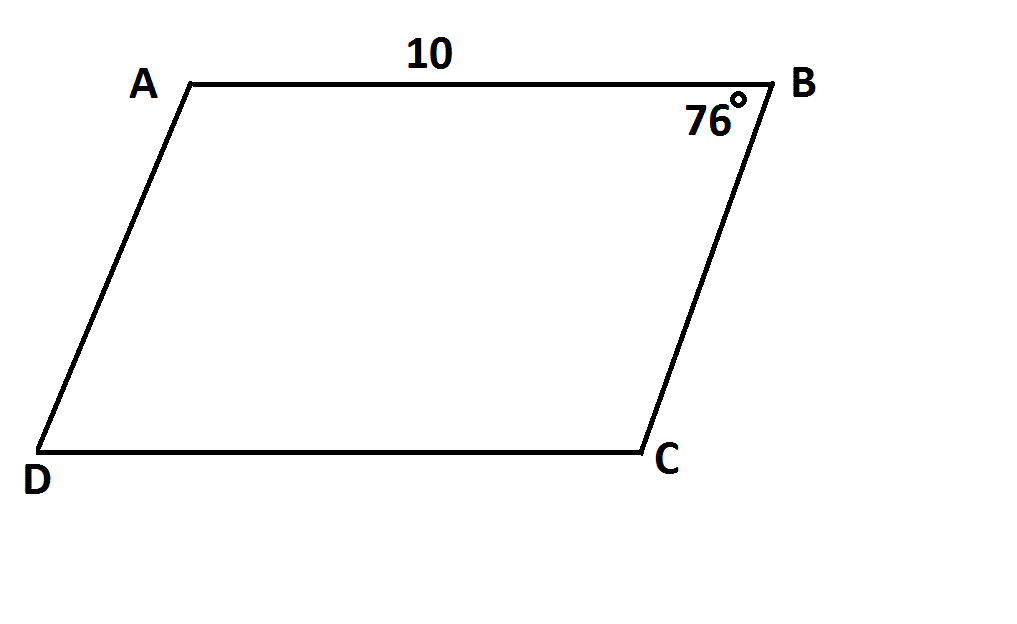All GMAT Math Resources
Example Questions
Example Question #1 : Calculating The Length Of The Side Of A Quadrilateral
The area of a trapezoid is 1,600 square centimeters. Its height is 24 centimeters, and one base is one decimeter longer than the other. What is the length of the longer base?
Let be the longer base. Then, since this is ten centimeters (= 1 decimeter) longer than the shorter, the shorter base has length . Substitute in the formula for the area of a trapezoid, and solve for :
centimeters
Example Question #2 : Calculating The Length Of The Side Of A Quadrilateral
The area of a trapezoid is 6,000 square inches. Its height is twice the length of its ionger base, which is three times the length of its shorter base. What is the height of the trapezoid?
Let be the length of the shorter base. Then is the length of its longer base, and is the height. Substitute in the area formula:
The height is six times this, or inches.
Example Question #121 : Quadrilaterals
A trapezoid has bases of length one mile and 4,000 feet and height one-half mile. What is the length of its midsegment?
The length of the midsegment of a trapezoid is the mean of the lengths of its bases; the height is irrelevant. The bases are of length 4,000 feet and 5,280 feet; their mean is
feet, the length of the midsegment.
Example Question #42 : Other Quadrilaterals
A given trapezoid has an area of , a longer base of length , and a height of . What is the length of the shorter base?
The area of a trapezoid with a larger base , a shorter base , and a height is defined by the equation . Restructuring to solve for the shorter base :
Plugging in our values for , , and :
Example Question #43 : Other Quadrilaterals
A given trapezoid has an area of , a longer base of length , and a height of . What is the length of the shorter base?
The area of a trapezoid with a larger base , a shorter base , and a height is defined by the equation . Restructuring to solve for the shorter base :
Plugging in our values for , , and :
Example Question #44 : Other Quadrilaterals
A given trapezoid has an area of , a longer base of length , and a height of . What is the length of the shorter base?
The area of a trapezoid with a larger base , a shorter base , and a height is defined by the equation . Restructuring to solve for the shorter base :
Plugging in our values for , , and :
Example Question #1 : Calculating An Angle In A Quadrilateral

Note: Diagram is NOT drawn to scale.
Refer to the above diagram.
Any of the following facts alone would be enough to prove that is not a parallelogram, EXCEPT:
Any one of these facts alone would prove that is not a parallelogram.
Opposite sides of a parallelogram are congruent; if , then , violating this condition.
Consecutive angles of a parallelogram are supplementary; if , then , violating this condition.
Opposite angles of a parallelogram are congruent; if , then , violating this condition.
Adjacent sides of a parallelogram, however, may or may not be congruent, so the condition that would not by itself prove that the quadrilateral is not a parallelogram.
Example Question #2 : Calculating An Angle In A Quadrilateral
Which of the following can not be the measures of the four interior angles of a quadrilateral?
All four of the other choices fit the conditions.
The four interior angles of a quadrilateral measure a total of , so we test each group of numbers to see if they have this sum.
This last group does not have the correct sum, so it is the correct choice.
Example Question #41 : Other Quadrilaterals
A circle can be circumscribed about each of the following figures except:
A right scalene triangle
A rectangle twice as long as it is wide
An isosceles triangle with its base one-half as long as either leg
A rhombus with a angle
An isosceles trapezoid with one base three times as long as the other
A rhombus with a angle
A circle can be circumscribed about any triangle regardless of its sidelengths or angle measures, so we can eliminate the two triangle choices.
A circle can be circumscribed about a quadrilateral if and only if both pairs of its opposite angles are supplementary. An isosceles trapezoid has this characteristic; this can be proved by the fact that base angles are congruent, and by the Same-Side Interior Angles Statement. For a parallelogram to have this characteristic, since opposite angles are congruent also, all angles must measure ; the rectangle fits this description, but the rhombus does not.
Example Question #4 : Calculating An Angle In A Quadrilateral
Rhombus has two diagonals that intersect at point ; .
What is ?
The diagonals of a rhombus always intersect at right angles, so . The measures of the interior angles of the rhombus are irrelevant.
All GMAT Math Resources




















































































































































